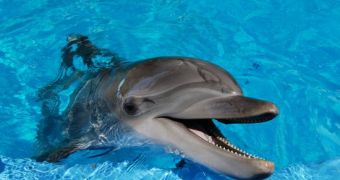Training and testing exercises scheduled to be carried out underwater between the years 2014 and 2019 will greatly disturb marine wildlife, reports issued by the United States Navy this past Friday, August 30, indicate.
More precisely, it appears that underwater training set to be carried out off the East Coast will probably kill some 180 whales and dolphins, give or take a handful.
Marine mammals inhabiting waters off the coast of Hawaii and Southern California won't be having the time of their lives either.
Thus, odds are about 150 whales and dolphins swimming in these parts of the world will be killed.
According to RT, computer models have shown that such underwater testing and training exercises will also injure thousands of marine mammals.
Some will be lucky enough to only sustain minor injuries, yet others will get some very serious ones.
What's more, the marine mammals are expected to change their behavior, meaning that they will probably have trouble finding food. Some might even panic and beach themselves.
Specialist Michael Jasny warns that, “These smaller disruptions short of death are themselves accumulating into something like death for species and death for populations.”
The same source tells us that these predicted whale and dolphin deaths / injuries will largely be due to underwater explosions.
However, physical contact with ships and sonar testing are expected to also have a negative impact on marine ecosystems.
Despite the findings of these reports, the US Navy appears to have no intention to give up on the idea of carrying out underwater training activities.
Commenting on the importance of such exercises, Kevin Slates, the current energy and environmental readiness division director for the Navy, stated as follows:
“Without this realistic testing and training, our sailors can’t develop or maintain the critical skills they need or ensure the new technologies can be operated effectively.”

 14 DAY TRIAL //
14 DAY TRIAL //